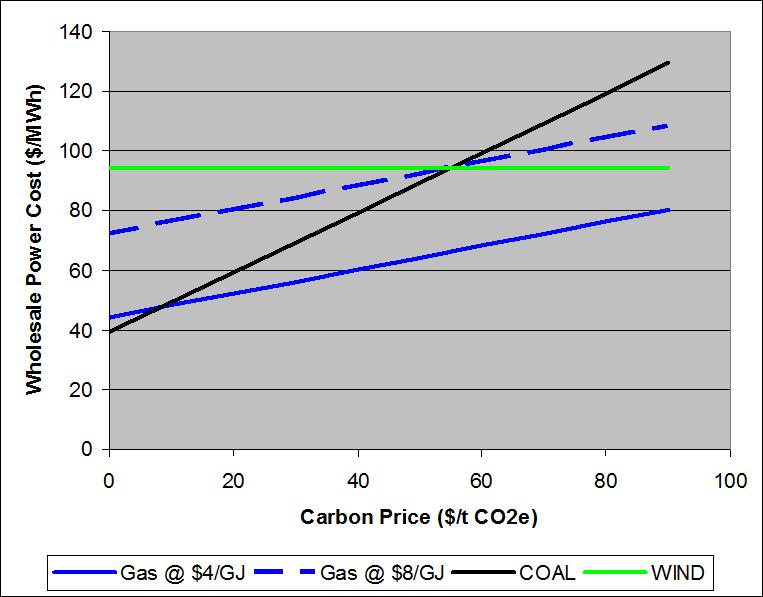Why do economists say that using a price signal is the least cost way of reducing emissions? It’s because in absence of a price signal, there are many, many different ways that people could suggest we reduce emissions and no real good way of deciding between them. Moving to 100% renewables, retrofitting CCS to every coal plant, installing solar pv or solar hot water on every roof, forcing an early retirement of all brown coal plant, and so on. The problem with this approach is that it ignores all the other possible sources of abatement, and in restricting the supply of abatement forces up the cost of reducing emissions. The idea of a carbon price is for that price to be the arbiter of all the potential abatement sources, and to ensure economic least cost by doing the cheaper ones before the more expensive ones.
The proponents of suggestions that aren’t made economic by the carbon price will be disappointed by this outcome. Typically they will say that the carbon price is “too low” and also call for “complementary measures” to ensure that their proposal gets up. However, just because a price signal isn’t giving you the outcome you declare in advance is required, it doesn’t mean it’s a market failure.
Alan Kohler’s article earlier this week called for a “hybrid” approach, involving the Coalition’s industry adjustment (aka abatement purchasing) policy and the Government’s carbon pricing. However, it fell into the trap of deciding what the answer is in advance (shutting down Latrobe Valley brown coal) and then deciding that the market was inadequate to deliver this outcome.
The Latrobe Valley generators can’t be assessed together because they have such different emission intensities. Hazelwood, the most greenhouse intensive, will require a much lower price to shut down than Loy Yang, the latest and most efficient brown coal plant. This is because Loy Yang will be able to recover substantially more of its carbon costs in the pass-through revenue, but Hazelwood’s earnings will decline as a much steeper function of carbon price.
It’s economically irrational to decide that, on the one hand, society’s level of ambition is insufficient to price carbon any higher than $20-30/tCO2e (including a section of society saying that zero is a perfectly good price), but then that society (ie taxpayers) should at the same time fork out to purchase abatement at many times higher than this price. How is that economically efficient? It’s certainly not least cost.
Kohler’s article also relied on the idea that replacement gas plant won’t be built for a carbon price less than $80/t, quoting analysis from David Leitch at UBS. I haven’t seen this analysis but it seems on the high side relative to other studies I’ve seen. The main determinant of this is the gas price. Without question, if the gas price goes to parity with international export of LNG, then the carbon price to see new plant into the grid will be higher. But the extent to which and speed at which this happens is yet to be seen. Secondly, if gas prices up too high, then other forms of energy will come into the mix. At $80/tCO2e, for example, many forms of existing renewable energy technology, notably wind, become very profitable.
The graph highlights these points. Note that:
- At current gas prices, quite a low carbon price results in gas plant being chosen ahead of coal plant.
- at LNG import parity gas prices, a higher carbon price is required to see this switch.
- Above $60/t, wind is cheaper than either coal or gas.
So the coal-gas shift happens between $10-50/tCO2e, depending on the price of gas. It also depends on the price of coal (which is assumed to be a constant $1/GJ in this graph). Higher coal price means lower carbon price required for the fuel switch. A key point here is that much of the abatement activity below business as usual is building new plant which is lower emission than it would otherwise be. Shutting down coal sounds like the right idea, but with all the sunk capital may not be the most economically efficient way of meeting any given target, especially when thinking about modern brown coal.
